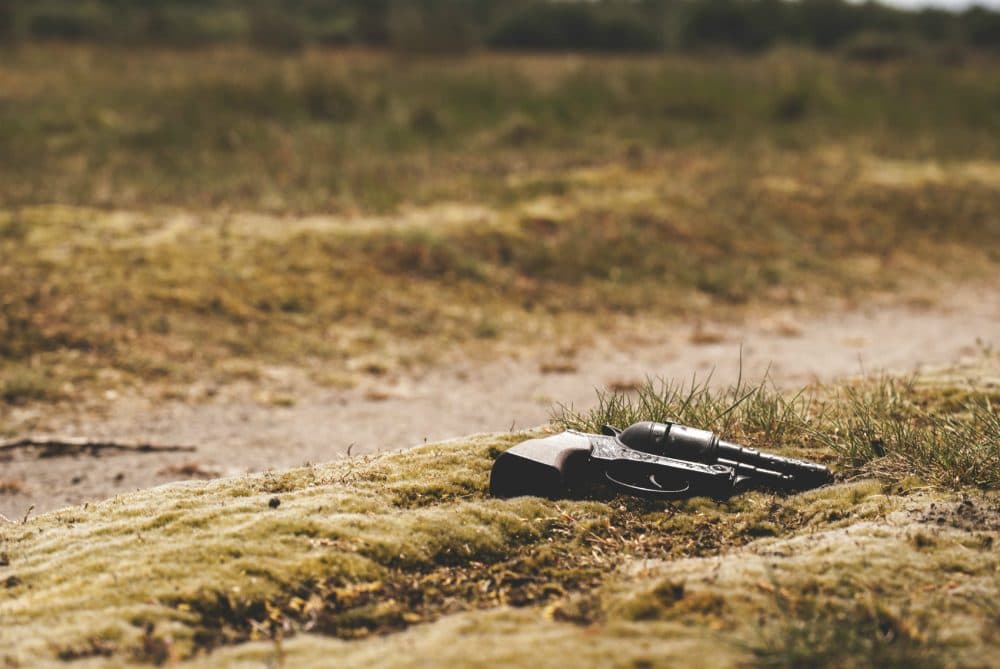Advertisement
Guns Endanger Rather Than Protect

Since the 1970s, gun lobbyists have convinced millions of Americans that having a gun at the ready is essential for self-defense at home and in public. Gun permits have increased three-fold in the last decade. Firearm sales rise after every mass shooting in the belief that guns make us safer. Nothing could be further from the truth.
Although gun use by mass shooters, criminals and terrorists dominates the news, the vast majority of U.S. gun deaths happen in everyday situations involving ordinary, fallible people: our friends and neighbors, domestic partners, family members and ourselves. Yet, gun safety proposals are generally limited to “common sense” solutions: strengthening and expanding criminal background checks; imposing a terrorist watch list ban on gun sales; improving mental health screenings and services; and reinstituting the federal assault weapons ban. These are very important first steps, but they do not sufficiently address the reality of gun violence, and our increasingly open gun laws.
We will need additional measures to address the 98 percent of gun deaths by weapons other than assault weapons.
Gun access increases the incidence of domestic violence, homicide, accidental death and especially suicide (which constitutes 60 percent of gun deaths.) A 2014 meta-analysis found that access to firearms at home doubles the risk of death from gun-related homicide and triples the risk of suicide. One study found that when a gun is present in the home, that gun is 43 times more likely to kill a family member than to kill an intruder. When someone is depressed, enraged, chemically altered or careless, the presence of a gun allows serious violence to happen. A momentary impulse for revenge or self-harm can turn deadly in a flash if there is a gun handy. But the profound grief and suffering of the shooter and the victim’s loved ones endures forever.
Mental illness is a factor in some homicides, but not nearly to the extent imagined. As a psychologist specializing in risk assessments of young people involved with violence, I can attest to the fact that we are nowhere near being able to reliably screen for future violent actions. Moreover, people with mental illness are far more likely to be victims of gun violence or suicide than to be aggressors. Improving mental health services, while certainly worthwhile, is not a realistic way to make a major impact on gun violence.
Reinstating the federal assault weapons ban would probably reduce mass shooting deaths, given that the number of such deaths increased sharply in the period immediately following its expiration in 2004. But we will need additional measures to address the 98 percent of gun deaths by weapons other than assault weapons.
Correctable factors contributing to gun proliferation and gun violence include:
- Laws that allow anyone who passes a background check to purchase unrestricted numbers and types of firearms, and high-capacity magazines
- The gun show and internet loopholes that allow anyone to bypass background checks
- New “right to carry” laws which allow loaded guns in an increasing number of settings — including national parks, bars, colleges and churches
- Laws permitting open carry in 47 states (most without permit requirements)
- Variable state regulations, facilitating interstate gun trafficking
- A 20-year-old NRA-promoted law which has prevented the CDC from researching or keeping data on gun ownership, gun safety, or gun deaths
- Physician gag laws in Florida and three other states that make it a crime for physicians to even ask about guns in the home
- Gun lobby obstruction of available “smart gun” technology that would prevent anyone but the owner from shooting the gun
An explicit goal of the NRA leadership is to enable citizens to outgun the police or military to defend against “tyranny,” or against authorities who might try to take their guns away. We had a chilling glimpse of what this alarming goal could bring last month, when the besieged Dallas police were outgunned by a shooter, and turned to a robot-delivered bomb to stop him. Furthermore, the police could not tell who was shooting at them because others were “open-carrying” assault weapons. This is insanity. We have allowed NRA lobbyists and self-serving politicians to defy the will of the people by blocking every proposed gun safety reform — including expanding background checks which is supported by 90 percent of the country and 83 percent of gun owners.
Australia has not seen a single mass shooting -- five or more deaths besides the gunman -- in the last 20 years.
Australia, which has a strong gun culture like the U.S., passed a very comprehensive set of gun safety regulations in 1996, following a terrible mass shooting. These include requiring a “genuine reason” to get a firearm license, registering all guns by serial number to the owner, gun buybacks and disallowing guns if anyone in the household has a criminal record. Australia has not seen a single mass shooting — five or more deaths besides the gunman — in the last 20 years, compared to 52 mass shootings, by the same criteria, in the U.S. during that period. (Only those US mass shootings including five or more deaths, other than the gunman, were counted from the database.) Furthermore, Australia’s rate of gun homicides has declined by 72 percent. The current rate of U.S. gun homicides (per 100,000 people) is 18 times higher than the Australian rate. The claim that gun safety regulations do not work is simply a lie.
American citizens and lawmakers must finally stand up against intransigent gun advocates who have inflamed paranoid fears in order to promote the big lie that guns protect rather than imperil. Massachusetts’ residents can start by supporting the courageous stance of Attorney General Maura Healey to enforce the state’s assault weapons ban, in the face of well-funded attacks from Smith & Wesson and the NRA. Changing people’s beliefs and reducing the lethal proliferation of guns, while navigating Second Amendment controversies, will be a daunting challenge. The process must start with an unflinching assessment of the real nature of gun violence, and a society-wide commitment to remedy this tragic problem.
